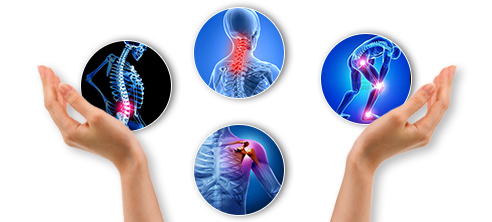If you’ve ever had significant or persistent knee pain, you know it can be a major problem. Climbing stairs or just walking around can be agony, you want to exercise, but your knees or hips hurt too much to do anything strenuous? Don’t give up. It’s important to remember that exercise is crucial for everyone, especially those suffering from arthritis.
“Sometimes my patients think the only way to relive pain is to stop all physical activity,”
“Keeping active is actually good for individuals suffering from joint pain or arthritis. Exercises that work the muscles and tendons provide stability and strength around the joint”.
– Craig Israelite, MD
4 main reasons for joint pain
1. Arthritis – either rheumatoid or osteo
2. Diseases – mumps, flu, hepatitis
3. Overuse injury – repeated strain on body
4. Weather – drop in barometric pressure
Osteoarthritis is incurable, but exercise can be one of the best therapies to deal with the disease. Studies have shown that exercise is just as effective as medication, although without any of the side effects and plus an improvement in physical and mental well being.. it’s a win win! Take this study for example showing that pain relief from regular exercise is comparable to that of analgesic drugs prescribed to people with arthriti
Because I love lists that are short, sharp and to the point to get my message across, have a list of benefits people with osteoarthritis can get from a regular exercise routine
- Reduce pain
- Improve physical function
- Improve quality of life
- Manage associated co-morbidities (obesity and other comorbidities)
- Improve balance
- Build muscle strength
- Aid joint lubrication and nourishment
- Improve flexibility
So what exercise is best?
There are many different forms of exercise to choose from. The type that is best suited for you will depend on your personal preference, the severity of symptoms and whether or not you have any additional health issues. Aerobic activities, and strength training are beneficial regardless of the intensity or whether its land / hydro. Although, in the beginning water might be a good start. Other options include but are not limited to:
Cycling / Bike
- Any type of activity that removes pressure from your knees, hips and back is great.
- Great activity that get your moving and keeps your joints protected
Swimming
- Water acts as a natural resistance to your body
- Water makes you buoyant and takes pressure off your knees and hips
Walking
- Try and work your way up to 150 minutes of moderate intensity a week
- Good way to build cardiovascular fitness without too much stress on your joints. If this is too much maybe try water walking instead.
Range of motion exercises
- Relieve stiffness
- Eg. Raising arms above head, shoulder rolls etc.
- Can be done daily
Things to remember or take into consideration
- 30 minutes of exercise most days is the general recommendation. Whether this is low intensity or high intensity, this is a positive step in a right direction
- Exercise at an intensity that gets you out of breath
- Reduce periods of prolonged sitting – prevents stiffness
- Avoid high intensity exercise – actually, more specifically just focus on exercising at a pace that your body can handle. If you haven’t exercised in 5 years I wouldn’t recommend going and toughing through a 45 minute high intensity workout at F45 with jump squats and the rest of it, but at the same time too little exercise can cause muscle weakness, pain and stiffness. It so so important to find the right balance of rest and exercise.
My advice? Find something that you enjoy doing and it will make things 1 million times easier. Whether that’s exercising with friends, joining a group class or seeking professional guidance from a health professional such as an Exercise Physiologist so you feel a little more confident – all will be helpful in the long run. I know it can be daunting for a lot of people and stiff and achy joints can often deter people, all I’m asking is that you give it a go. I’m not saying it’s going to be easy and I guarantee there will be good days and bad days but just look back to the benefits and the long term goals.
Remember: “Whilst arthritis isn’t curable, it is manageable”
References:
B Sun, H. (2013). Osteoarthritis – Why Exercise?. Journal of Exercise, Sports & Orthopedics, 1(1).
Effects of a home exercise program in patients with severe hip osteoarthritis. (2005). Osteoarthritis and Cartilage, 13, p.S97.
Exercise Right (2018). Exercise as effective as analgesic drugs for relieving pain from lower limb osteoarthritis – Exercise Right. Available at: http://exerciseright.com.au/exercise-for-osteoarthritis/
Henriksen, M., Hansen, J., Klokker, L., Bliddal, H. and Christensen, R. (2016). Comparable effects of exercise and analgesics for pain secondary to knee osteoarthritis: a meta-analysis of trials included in Cochrane systematic reviews. Journal of Comparative Effectiveness Research, 5(4), pp.417-431.
